Magnolia x soulangeana 'Alexandrina' (Alexandrina Saucer Magnolia)
Michael's Opinion
'Alexandrina' flowers about a week to ten days after M. x soulangeana and is in bloom for a long period of time. It is erect in form with large, tulip-like, fragrant blooms.
Botanical Information
| Family | Magnoliaceae |
| Genus | Magnolia |
| Species | x soulangeana |
| Cultivar | 'Alexandrina' |
| Category | Woody |
| Type | Tree (deciduous) |
| Origin | Introduced by Cels of Montrouge, Paris in 1831. |
| Pronunciation |
Details
| USDA Hardiness Zone | 5 - 8 |
| USDA Hardiness Ref. | |
| Canadian Hardiness Zone | 4a - 8a |
| Canada Hardiness Ref. | |
| RHS Hardiness Zone | H6 |
| RHS Hardiness Ref. | |
| Temperature (°C) | -26 -(-7) |
| Temperature (°F) | -15 - 20 |
| Height | 5 - 10m |
| Spread | 5 - 8 m |
| Growth | Medium |
| Flowering Period | May |
Description and Growing Information
| General Description | It is a deciduous, medium sized, ornamental tree and is typically multi-stemmed being quite broad spreading, with the width being almost equal to its height. |
| ID Characteristic | Fragrant, tulip -shaped flowers, to 10 cm in length, with nine tepals, flowering over a long period and about one to two weeks before M. x soulangeana. |
| Shape | Young trees are upright but with age become more oval with drooping branches. |
| Landscape | A large specimen Magnolia where it should be planted to realize its full form. Blooms are frost sensitive so plant in areas with free air circulation. |
| Propagation | Softwood cuttings may be taken in early summer and rooted under mist and bottom heat. Layering of low branches in early spring. |
| Cultivation | It can be grown in partial shade but does best in full sun. It prefers acidic, organic, clay based soils that are well drained but not excessively dry. It does not transplant easily and care should be taken with the thick, fleshy roots. Mulched tree wells are a 'must' to protect the thin bark from machinery damage. |
| Pests | It is generally pest free but can be prone to canker diseases which can kill entire branches. Different species of scales (depending on geographic location) that may infest twigs and foliage, dormant oils are a recommended control where permitted. |
| Notable Specimens | There are three large specimens planted in 1967 in the Arboretum at the Royal Botanical Gardens, Burlington, Ontario, Canada. The Gardens of Fanshawe College, London, Ontario, Canada, has a young specimen (planted 2003) in its collection. Caerhays Castle, Goran, Cornwall, United Kingdom. |
| Habitat | Horticultural origin. |
| Bark/Stem Description | Bark is thin and easily damaged by construction or machine operations such as lawn mowing. As it matures branches tend to droop touching the ground if left unpruned. Young bark is light brown matures to an even grey colour. |
| Flower/Leaf Bud Description | The terminal flower buds are extremely tomentose and are two scaled to 2 cm in length. Vegetative buds are 1/4 the size of the flower buds but are also tomentose and scaled. |
| Leaf Description | The leaves are , obovate, simple, alternate, 10-20 cm long, and dull green in the summer turning a full, dull yellow in autumn. |
| Flower Description | The flowers are fragrant, tulip -shaped, white flushed with purple on the exterior, to 10 cm in length, with nine tepals, flowering over a long period and about one to two weeks before M. x soulangeana. |
| Fruit Description | This tree rarely bears fruit, but when they do it ripens to red, is 10 cm long, asymmetrical and matures in August through September. |
| Colour Description | Dull green leaves in the spring and summer turning a full, yellow in autumn. The flowers are white flushed with purple on the exterior. The bark is light brown maturing to an even grey. |
| Texture Description | The plant is medium to coarse in texture. |
Photographs
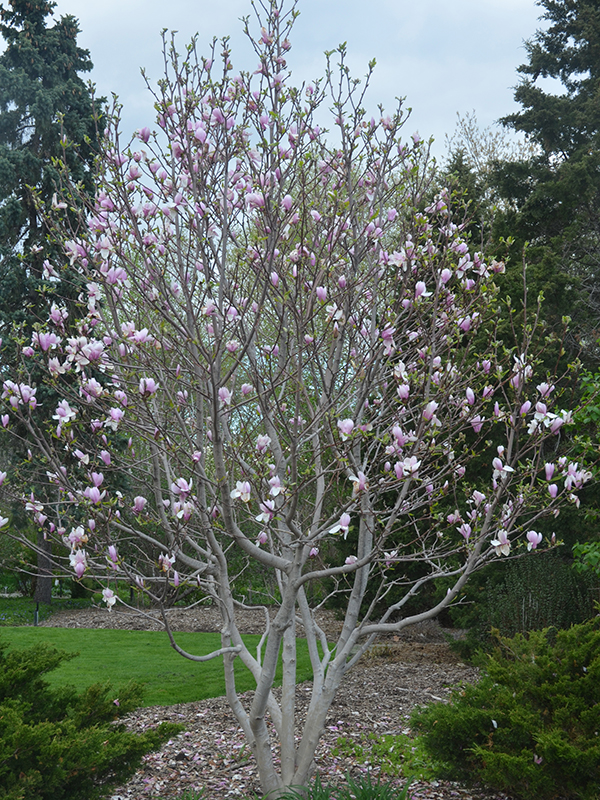
Magnolia x soulangeana 'Alexandrina', form.
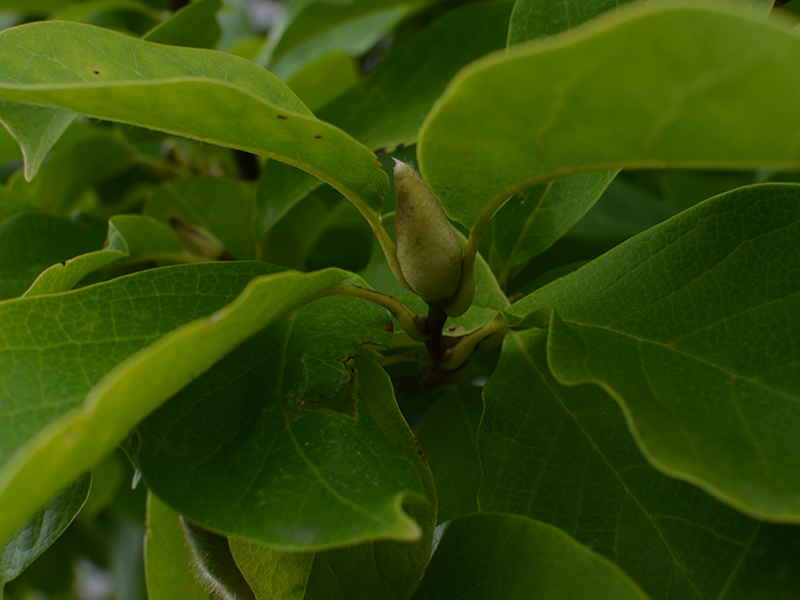
Magnolia x soulangana 'Alexandrina', leaf.

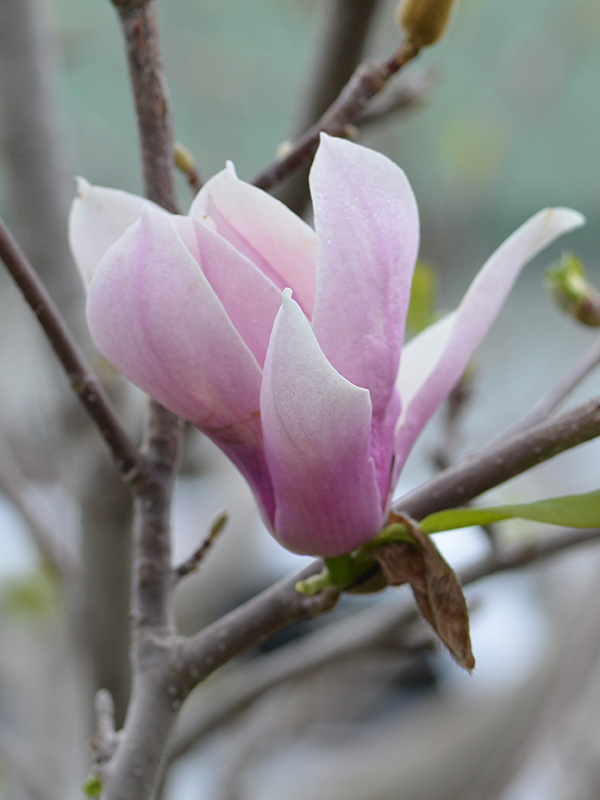
Magnolia x soulangeana 'Alexandrina', flower.

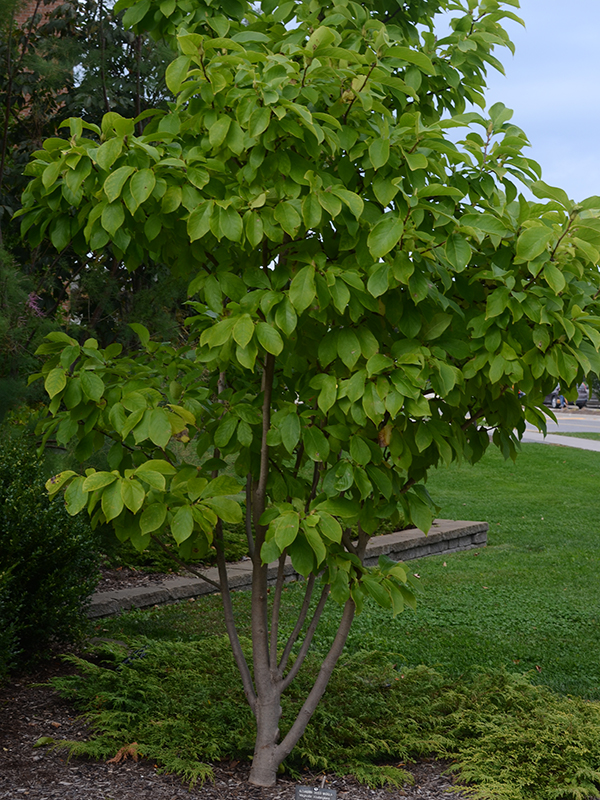
Magnolia x soulangeana 'Alexandrina', spring.
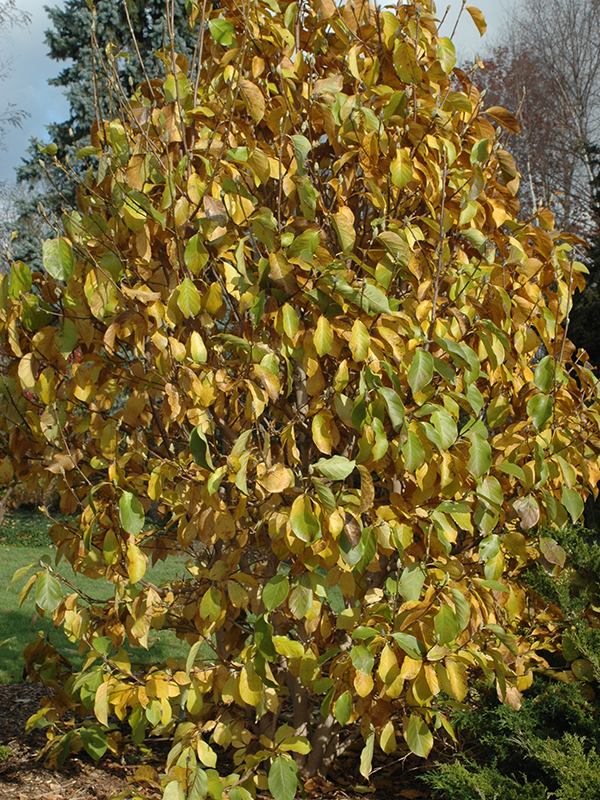
Magnolia x soulangeana 'Alexandrina', fall.
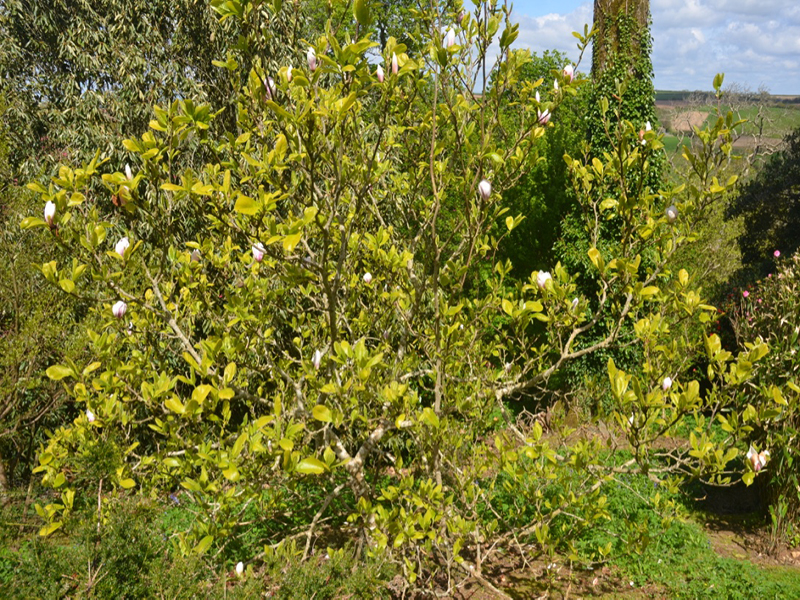
Magnolia x soulangeana 'Alexandrina', form, Caerhays Castle, Goran, Cornwall, United Kingdom.
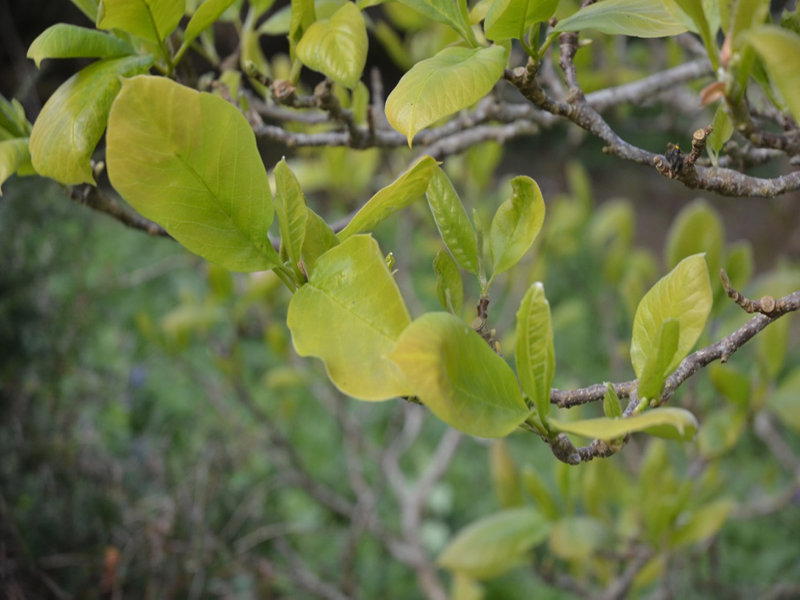
Mgnolia x soulangeana 'Alexandrina', leaf, Caerhays Castle, Goran, Cornwall, United Kingdom.
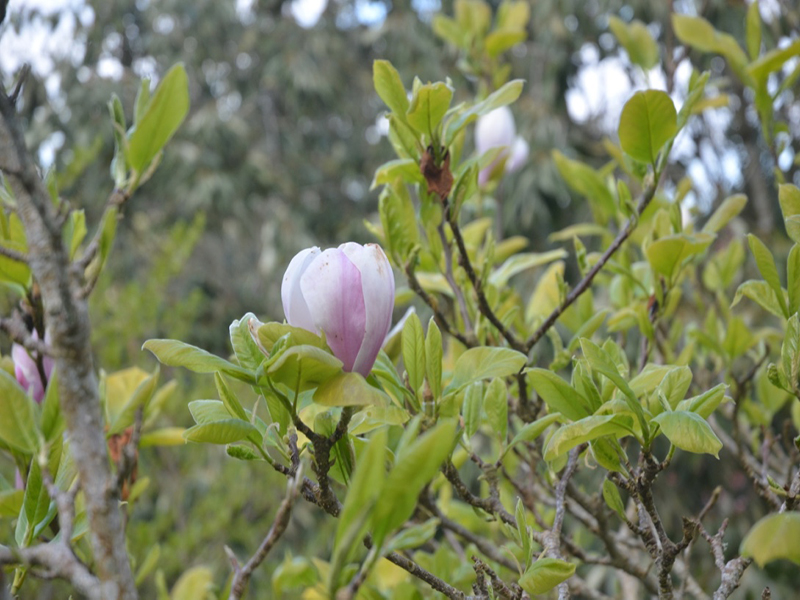
Magnolia x soulangeana 'Alexandrina', flower, Caerhays Castle, Goran, Cornwall, United Kingdom.
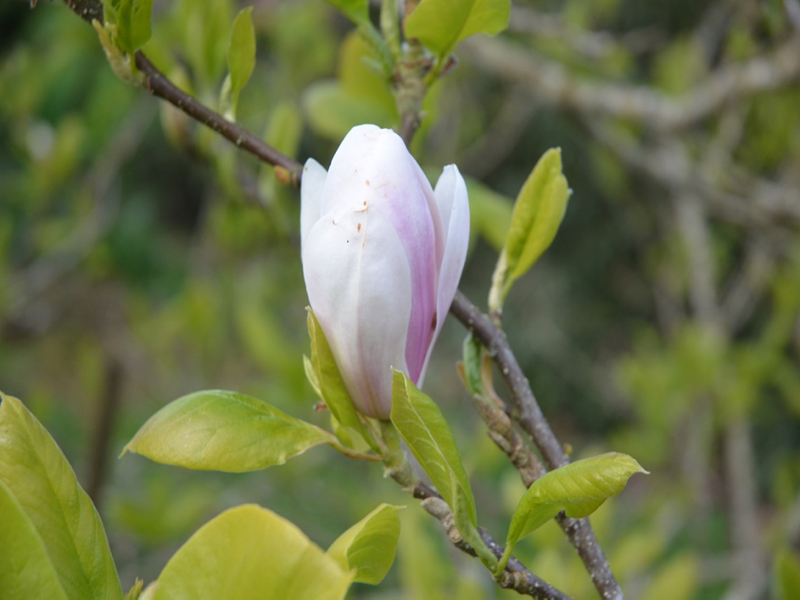
Magnolia x soulangeana 'Alexandrina', flower bud, Caerhays Castle, Goran, Cornwall, United Kingdom.